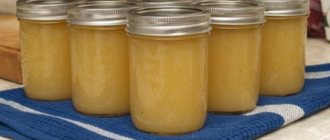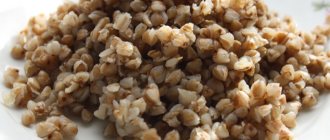The physiological life of children in the first months largely depends on the functioning of the digestive system. When violations occur, every mother experiences anxiety. Therefore, to prepare the gastrointestinal tract for complementary feeding, you need to know the digestive characteristics of an infant.
The digestive system of an infant has its own characteristics
Features of the digestive system of infants
Infants' digestive system is not yet perfect, which is why they suffer from colic, gas, and diarrhea. By 4 months, the problems end, and by 6 months, children are transferred to mixed feeding.
The baby's stomach has the necessary properties to absorb breast milk or formula; despite its small size, the esophagus is already formed at birth. The problem is that it is quite short and weak, so it cannot always contain food entering the stomach. This causes the baby to experience characteristic reactions: regurgitation after eating, vomiting (the contents of the stomach are expelled in a strong fountain), hiccups (due to contraction of the diaphragm and breathing problems when overeating).
Breakfast
As we remember, it should be quite high in calories, protein and carbohydrates. It is optimal to cook porridge with milk or water.
Children's menus from 1.5 years old may include oatmeal, wheat porridge, buckwheat and millet. They are the most useful. As for rice, it is better to cook it less often, since unpolished, that is, brown, is still rough for the baby’s gastrointestinal tract, and white is less healthy.
We offer you several sample breakfast options.
Option I - porridge
Millet
Let's prepare milk millet porridge. The serving should be approximately 150 – 170 ml.
To prepare the most healthy porridge, you need to cook it as little as possible, and for this you just need to soak the cereal for a few hours or overnight. Millet is the densest and most difficult to boil, so it makes sense to soak it in the evening.
- Pour 2 tbsp. cereals and leave overnight.
- In the morning, we wash the cereal, fill it with clean water so that it covers the millet by less than half a finger, add salt and put it on the fire.
- As soon as the porridge boils, add 2 tbsp. milk, add 1 tsp. sugar and cook for another 5-7 minutes.
- Turn off the finished porridge, let it stand under the lid for 5 - 10 minutes and serve. You can add 1 tsp per serving. butter.
Instead of sugar, you can use jam or preserves as a sweetener, but it is better to avoid honey for now - it is too allergenic.
Oatmeal
We prepare it for children over 1.5 years old only from regular Hercules flakes. No instant cereals, since there is no benefit left in them, only extra sugar and preservatives. But if you want to cook it as quickly as possible, we also soak 2 tbsp. cereal.
Fill them with boiling water in a ladle so that the water is level with the cereal, add some salt and cover with a lid. Keep for about half an hour, pour in 3-4 tbsp. milk and put on fire. Bring to a boil, that’s it, you can turn off the porridge, it’s ready!
We also fill it with oil and either add 1 tsp. sugar or jam.
In addition, it is good to add fruit to oatmeal. It is better to do this 5 minutes before the end of cooking, and if the cereal has been soaked, then immediately after the porridge boils.
Cook pearl barley porridge
Option II - cottage cheese
Children's cottage cheese
We choose a product with medium fat content, 9 or 15%. Nutritionists categorically do not recommend eating village cottage cheese for children 1.5 years old because the fat content in it is too high.
The serving should be approximately 100 - 150 g. You can use children's store-bought cottage cheese. If desired, add fresh fruit to it: cut an apple, pear or banana into slices and mix.
If the child eats cottage cheese well, but avoids porridge, or vice versa, we will prepare an original breakfast by combining both ingredients.
Cottage cheese with oat flakes
To begin, grind 3-4 tbsp in a blender or coffee grinder. oatmeal. This amount is enough for several servings.
Take 100 g of cottage cheese, add 1 tbsp to it. the resulting oatmeal, sweeten it with sugar or jam at your discretion, mix and serve! From such a curd mass you can form a hedgehog or any other figure familiar to your baby.
It’s also good to add ¼ banana to the cottage cheese - you can simply cut it up or other seasonal fruits. We remember that for children from 1.5 years old, apples and pears need to be grated.
Option III - omelet
Since we do not yet offer fried food to children of this age, we will prepare the same omelet as for adults, but in a different way.
- Mix 1 egg with 3 tbsp in a plate. milk, salt.
- Then take a small jar with a lid, grease the walls with vegetable oil, pour the egg mixture into it and place it in a pan with cold water. The level should correspond to the height of the omelette.
- Place on the fire and cover the pan with a lid. After boiling, cook the omelette for 20 minutes, turn it off, let it cool without opening it and take it out. To do this, you need to shake the jar, then the omelette will slide out on its own.
If your baby loves this dish, you can begin to diversify its taste by adding grated vegetables: zucchini - literally 1 tbsp for this volume, broccoli or cauliflower.
In addition to this breakfast, you can offer a slice of bread and butter. From the age of 1.5 years, a child can already receive up to 15 - 20 g of this product per day. The best option would be a sandwich with white bread or a loaf, since rye varieties are much more difficult to digest and can cause bloating.
Basic principles of natural nutrition
The baby burped yellow - yellow burp in a baby
Pediatricians warn that insufficient maturity of the gastrointestinal tract of infants requires a serious attitude towards baby nutrition, especially during the transition to mixed feeding.
The basic principle of natural nutrition for children is a balanced diet, which should include all the nutrients for a growing body. Pediatric nutritionists have compiled an approximate list of necessary products included in recipes for complementary feeding of infants up to one year:
- cereals, potatoes - high carbohydrate content;
- meat, fish, eggs, beans - high protein content;
- vegetable and animal fats;
- fruits and vegetables - vitamins and minerals;
- milk and fermented milk products.
The beginning of a child's life and breastfeeding
From the moment of birth, the baby must receive micronutrients, vitamins and minerals - mother's milk contains them in the right quantities. Natural feeding remains the most optimal and suitable for a baby, but a woman does not always manage to establish the lactation process. It is important in feeding a child up to one year old not only the quality, but also the quantity of food received - if the mother does not have enough milk, she has to switch to adapted formulas.
For the first week, the baby eats colostrum, then transitional milk, and only after lactation has been established can a woman determine the daily intake. There are two formulas for calculating the nutrition of children in the first year of life, which are used a week after birth:
- According to Finkelstein. To calculate the required amount of food, the baby’s age (in days) is multiplied by 70. Equality applies for a child’s weight up to 3200 g. If the baby weighs more than 3200 g, the age should be multiplied by 80.
- According to Geibner-Cherny. The formula is used from 2 weeks of the baby’s life to 9 months. At 2-6 weeks the norm is 1/5 of the baby’s weight, from 6 weeks to 4 months – 1/6, from 4 to 6 months – 1/7.
- According to Zaitseva. The child’s body weight (in grams) is multiplied by age (in days), from the resulting number 2% is determined - this is the daily amount of nutrition for a breastfed child in the first year of life.
In a year, the total amount of food per day should not exceed 1000-1200 ml.
When breastfeeding, breastfeeding experts recommend feeding the baby on demand, adhering to a free schedule. This will normalize the production of breast milk and prolong the lactation period as much as possible. Over the course of a month, an approximate feeding schedule is usually established - breaks between meals are 2-2.5 hours.
Infant age for natural food
Why does a child have vomiting and diarrhea? What to do with diarrhea and nausea in children under one year old
Breast milk or adapted formula is a natural food that meets the needs of a newborn. It is quite enough to feed a baby for up to six months. Then complementary foods are introduced, and the baby is transferred to a mixed diet.
The main principle of natural nutrition for a small child is balance.
For your information! Physiologically, the child is ready for natural food in the period from 4 to 6 months. This is typical for children who are both on breastfeeding and on artificial feeding, since the functioning of the gastrointestinal tract improves and the activity of digestive enzymes increases. All this develops the ability to chew, swallow thick food, feel hunger and satiety.
These changes make it possible to introduce natural products, which must contain the right amount of proteins, carbohydrates and fats (according to WHO in the proportion of 1/1/4).
Puree - baby's first complementary food
Nutritionists explain why you need to start getting acquainted with a new food using purees of a homogeneous (without lumps) consistency. Vegetable purees contain useful substances and fiber that help regulate a child’s stool; at the same time, purees are a smooth transition from liquid to thick food.
Important! The first purees should be vegetarian, made from green vegetables: zucchini or cauliflower. The monocomponent dish is prepared in a slow cooker, then, when adding broth, it is ground in a blender.
Introduction of food in pieces
If at the beginning of complementary feeding new food should be pureed, since the baby has few teeth, then in the second half of the year the dishes are prepared with a thicker consistency, leaving small pieces.
A six-month-old baby will have up to 8 teeth, allowing him to bite and chew, so food can be crushed into 5mm pieces. Recipes for children under one year old include dishes made from grated vegetables and fruits, meat (in the form of meatballs and steamed cutlets).
Solid foods in infant feeding
The basis for introducing solid food is the development of the chewing apparatus and the formation of new taste habits in the baby.
By about 7 months, he can not only chew and swallow solid food, but also hold baby cookies in his hand, which he is given to chew. At one year of age, children are offered boiled vegetables, bananas or baked apples to eat on their own.
One of the first products in a baby’s diet should be vegetable puree.
Cooking for children
Mother's milk is the best food for a baby. An indisputable fact is that with breast milk the child receives not only all the vitamins and unique nutrients he needs, but also antibodies to fight various infections. According to the World Health Organization (WHO), breastfeeding forms a deeper psycho-emotional connection with the mother, promotes sensory and cognitive development, and protects the child from infectious and chronic diseases. Breast milk is a natural food product for newborns. It contains all the nutrients and energy a baby needs during the first months of life and continues to meet half or more of the baby's nutritional needs during the second half of the first year and one-third during the second year.
At the age of about 6 months, the baby begins to need additional nutrients, since breast milk is no longer able to provide all the needs of the growing body. This time, according to WHO recommendations, is most suitable for introducing complementary foods. Although mother's milk continues to be the main source of all substances important for life, the body no longer has enough energy, vitamins and microelements. By this time, the baby’s digestive system is physiologically ready to digest coarser foods. Moreover, its use becomes vital. Complementary foods cause the release of special enzymes that have a positive effect on the motility of the gastrointestinal tract.
But 6 months is the average age for introducing complementary foods to breastfed children. A bottle-fed baby should start receiving complementary foods earlier - at 4–4.5 months. However, children do not grow according to an exact pattern and each child is individual: one is ready for complementary feeding at 5 months, the other only at 9. It all depends on how the baby develops, whether he has enough breast milk, whether he is prone to allergic reactions and many other factors. Accurate information about whether the baby is ready for the introduction of complementary foods can only be given by a pediatrician who observes its development. In order to determine whether it’s time for your son or daughter to start giving complementary foods, you should pay attention to the following factors:
• the baby does not have enough breast milk: he is increasingly put to the breast;
• the baby sits confidently without support;
• the baby's weight has doubled since birth, and in premature babies - two and a half times;
• the child shows interest in food from the diet of the adults around him, looks at them with interest when they eat, tries to take food from the plate or from the mouth of the parents;
• the child's reflex of pushing food out with the tongue gradually fades. You can check this in a simple way: offer your baby water in a spoon, he must swallow it. This skill is very important so that complementary foods are completely digested.
Before introducing complementary foods, the child must be absolutely healthy. Malaise, fever, problems with the tummy or teeth are not the best companions for such an important, but unusual for a baby, process as introducing new food.
After determining the time to start complementary feeding, the next question becomes: where to start and how to do it correctly?
The first feeding is a very individual matter. The choice of dishes for him depends on the characteristics of the body and the condition of the baby. If you have a problem with weight loss, it is better to start with gluten-free cereals, in other cases - with vegetable and fruit purees.
At first, the dish should consist of one type of product; you should not mix two types of vegetables, fruits or berries in one puree or juice. The best foods for the first vegetable feeding are cauliflower and broccoli, potatoes and zucchini (especially if the baby has constipation). Colored fruits and vegetables (red apple, dark grapes, carrots, beets, pumpkin) are offered to the baby a little later. It is advisable not to add sugar to fruit purees and salt to vegetable purees.
The healthiest way to prepare vegetables is to steam them and then chop them using a blender or sieve. With this heat treatment, more vitamins and other useful substances are preserved. The puree must be made liquid, because the baby is not yet ready to swallow thick food.
Porridges for a 6-month-old baby are introduced, starting with one type of cereal. It is recommended to prepare gluten-free porridges: buckwheat, rice and corn. First you need to sort out the cereal, grind it in a coffee grinder and only then cook it. Both water and breast milk are suitable for cooking. It is useful to add melted butter to the finished porridge.
At the age of about 8 months, meat can be introduced into the baby’s diet. It is recommended to start complementary meat feeding with lean beef, or poultry (turkey), or rabbit - these are the most hypoallergenic and easily digestible types of meat. Since the baby cannot yet chew food well, meat dishes should be thoroughly ground to a smooth puree. To do this, the meat must be cleaned of veins and films, boiled well and finally minced twice through a meat grinder or chopped using a blender. Meat must be introduced into the child’s diet gradually: start with ¼ teaspoon and, gradually adding, bring it to the daily norm (30–50 g for an 8–12 month old child). Monitor your child carefully to see if he has an allergic reaction. At first, the meat can be added to vegetable puree, which is already familiar to the baby, or mixed with milk. Then it is recommended to try giving it separately. When cooking meat, as well as directly into meat puree, you do not need to add salt and spices. For each complementary food, only freshly prepared meat should be used. Since a child’s kidneys are not fully formed until they are one year old, under no circumstances should you give your baby meat broths. For soup, use vegetable broth.
Cottage cheese and kefir - a source of calcium and phosphorus, which are so necessary for the formation of bone tissue - children first try at 7-8 months. Getting to know cottage cheese, which contains, among other things, B vitamins, niacin, and folic acid, starts with ½ teaspoon. Within a month, the daily volume of consumption should be increased to 30–40 g. Keep in mind that even by the end of the first year of life, the volume of cottage cheese in the baby’s daily diet should not exceed 50 g! The baby's kidneys may not be able to handle larger amounts of this product due to its high protein content. Kefir should be introduced into children's diets gradually, starting with 30 ml, increasing the volume of product consumed to 200 ml by 9 months, which corresponds to the volume of one feeding. When choosing kefir, carefully read the labeling to see if it is intended for children. Fermented milk products for children have a delicate taste and low acidity. The composition of regular kefir does not meet the physiological needs of a child in the first year of life, so the baby must be fed with kefir created specifically for baby food.
Fish, rich in proteins, omega-3 fatty acids, vitamins, fluorine and phosphorus, can be given to a child after 9 months. For baby food, it is recommended to use predominantly low-fat varieties of fish (containing no more than 4% fat), but all types of fish with medium fat content are also acceptable in the children's diet. Low-fat varieties include cod, hake, river perch, navaga, pike perch, and flounder. Medium-fat varieties include sea bass, herring, trout, and sea crucian. Fish varieties such as herring, mackerel, salmon are fatty varieties and therefore are not recommended for use in baby food. You should give fish to your baby very carefully, because this product quite often causes allergies.
In general, the rules for introducing any complementary foods are as follows: each product is introduced starting with 1 teaspoon. The dosage is increased gradually over 5–7 days until the full dose is reached. The child himself will show that he is full by turning his head away, pushing away the spoon or refusing to open his mouth. Every time after the baby has received complementary foods, it is advisable to put it on the breast. This will help maintain lactation and the baby will feel satisfied.
If a child refuses complementary feeding, there is no need to force-feed him, as he may refuse all other foods altogether. You can offer a product that has a different taste or texture, or the same product on a different day. To make it easier for a child to get used to new tastes, it is recommended to add breast milk or formula in the case of artificial feeding to complementary feeding products.
Complementary foods should be freshly prepared, have a soft, homogeneous consistency ranging from creamy to creamy (depending on age), and be cooled to body temperature (36–37 °C).
Of course, it is necessary to feed your baby breast milk for as long as possible. It remains the main food for up to a year, a source of growth hormones and antibodies that form the child’s immunity. But remember that the main task of complementary feeding is to awaken food interest and form the baby’s natural eating behavior: the development of the chewing apparatus, stimulating the enzyme system of the gastrointestinal tract to digest “adult” food. Therefore, do not make it a goal in itself to maintain portion sizes or alternate types of food. Be guided by your child's tastes and be patient if getting used to solid foods is a little difficult.
What is included in the diet of a one-year-old child?
Red cheeks in a baby - why they turn red and peel
For full development, a child must receive a sufficient amount of proteins, fats, carbohydrates, microelements and vitamins. Recipes for babies under 1 year old should include milk and dairy products, eggs, liver, meat, fish, vegetables, fruits, and cereals.
Porridge in children's diet
When introducing porridge into your diet, it is more convenient to prepare it from “factory-made” cereals, which dissolve well in water, breast milk or formula.
To prepare simple porridge at home, the cereal must be ground to flour and boiled in water with the addition of breast milk or formula. The first porridge should be five percent, semi-liquid (5 g of cereal per 100 ml), after a month a thicker, ten percent porridge is prepared.
Vegetables are a must for children
Vegetables are a must on the children's menu. For full development, a child needs up to 200 g of vegetables per day. Children's nutritionists are of the opinion that the first vegetables should be traditional for the region where the baby lives. Zucchini, pumpkin, carrots, and cabbage are deservedly considered universal.
Fruits in children's diets
Fruits and berries are also included in an infant's diet, but they should be offered with caution, as some of them cause allergies. Apples, bananas, apricots are useful for children, and gooseberries and cherries are among the berries. It is healthier to start introducing fruits and berries with a homogeneous puree.
Meat on the children's menu
In the second half of the year, the daily menu for babies includes meat. Getting to know the meat product begins with homogenized puree. To prepare the puree, the meat is boiled, passed through a meat grinder and mixed in a blender with a small amount of vegetable broth. By about 9 months, the meat can be chopped less, leaving small pieces.
Introducing fish into a child's diet
All pediatricians note the benefits of fish in a child’s diet for growth and development, as a source of protein in the body. It has a more delicate texture than meat, so it is better absorbed. When fish dishes are introduced into the diet for babies under one year of age, the body receives building material for its cells, since they contain polyunsaturated fatty acids.
Fish dishes are useful for nutritious nutrition of a small child
Fish is included in the diet from 8-9 months, unless the baby is allergic. Then fish dishes are postponed until a year.
Eggs on the children's menu
Eggs are an essential component of a child's diet. The yolk contains fats, proteins, minerals, and vitamins. However, the risk of allergies must be taken into account, so at first it is better to use hypoallergenic quail eggs.
Egg yolk is administered in a small piece, mashed with breast milk. The portion is gradually increased to a quarter, and after two weeks - to half. Half a yolk per day is enough for a child up to one year old.
Dairy products
Children like delicious dairy products because they resemble mother's milk. They contain beneficial bacteria that affect the intestinal microflora and strengthen the immune system. A one-year-old child is given low-fat cottage cheese, baby yogurt and kefir. It is useful to prepare various dishes from them for babies up to one year old, for example, casseroles or cheesecakes.
Dr. Komarovsky believes that complementary feeding should begin with fermented milk products, for example, low-fat kefir. They actively participate in the digestion process, improve it and reduce the load on the liver.
Complementary feeding rules
- You need to understand which foods are a priority in your baby’s diet and which are secondary. As main courses, the child should receive more high-calorie foods: meat, cereals, vegetable purees; and leave fruits and drinks made from them for last.
- The first and last feedings are still mother's milk or formula.
- Five meals a day are maintained.
- The toddler should already be trying to eat on his own.
- It is allowed to include crumbs of pasta, puddings, cow's milk, egg whites, fattier meats and dishes made from them into the diet.
- Still gradually and with small portions, complementary feeding with new foods begins. In cases of allergies, such complementary feeding is completely stopped before the age of one year. And then, after consulting a doctor, a decision is made on introducing one or another product.
- The baby needs to be given medium-hard food, especially if he has already acquired several teeth and needs to develop chewing skills.
- There should be no more night feedings.
Allergy risk
We still continue to introduce foods to the toddler's menu, so it is not surprising that allergic reactions can still occur.
Some parents think that if the child is already 10 months old, then he can immediately be given a whole portion of this or that product. However, it is not. You still need something new, untried by your baby, introduce crumbs into the diet no more than a teaspoon and monitor the body’s reaction throughout the day. If an allergy develops, immediately stop administering this product.
In addition to this option, I will tell you another case. My friend gave her baby too much applesauce too often. I didn’t tell anyone about it, I didn’t share it with anyone. I just decided for myself that green apples are healthy and the baby should get them as much and as often as possible. As a result, food allergies are acquired due to multiple contacts. And now, if the baby eats apples, she is immediately covered with small pimples.
That is why it is very important to know the age requirements for taking each product and follow these recommendations. https://www.youtube.com/embed/JeSqNaFraOI
Sample menu by month
When creating a menu for a child up to one year old, it is useful to take into account the advice of nutritionists, since during this period eating habits are formed.
Meals by month
| Age/feeding | 5-6 months | 6-7 months | 7-8 months | 8-9 months | 10-12 months |
| 10.00 | Vegetable puree | Milk porridge Fruit puree | |||
| 14.00 | Cottage cheese | Vegetable puree Meat puree Yolk Crackers | Vegetable puree Meat puree/Fish Yolk Crackers | ||
| 18.00 | Fruit puree | Vegetable puree | Cottage cheese | Cottage cheese Fermented milk products | |
The nutrition table is advisory in nature, helping to create an individual menu for the baby, taking into account age characteristics and food preferences.
Preparing dishes for babies requires following the rules
Number of feedings and intervals between them
It is important for parents to know how often to feed their child and what intervals to take between meals. If you eat too often, the previous portion of food will not have time to be digested
This creates a load on the stomach, liver, intestines, and pancreas, and can lead to gaining extra pounds. Too infrequent feeding can cause the development of gastritis and other gastrointestinal problems.
The number of feedings and the interval between them is determined by the selected mode. If the mother decides to give food on demand, then the frequency of the baby’s consumption of breast milk or formula can reach 5-9 times. The optimal interval between feedings is 2-3 hours.
Signs that a baby is hungry are crying and screaming. If the mother has chosen feeding on a schedule, milk will need to be given 5-7 times a day. The break between feedings is 3-4 hours. Much depends on age. As they grow and develop, the number of feedings is reduced and the interval is increased. Gradually, the child is weaned off night snacks.
Adapted mixtures take longer to digest
The type of feeding must be taken into account. Breastfed babies should be given food more often than artificial babies. Adapted infant formulas contain a lot of protein, which takes longer to digest.
Number of feedings by month, optimal intervals between meals in the table:
Cooking recipes for children under one year old
Preparing meals for children at home is not difficult. Detailed recipes for infants up to one year can be found on children's websites. The main thing is to focus on the following rules:
- Steamed dishes are healthier;
- start with smooth puree, gradually moving to thicker food.
Fruit puree
Wash the fruits, remove peels and seeds, and chop finely. Boil, beat in a blender into a homogeneous mass, add 1 tbsp. a spoonful of fruit broth. The puree can be stored in the refrigerator for no more than 2 days.
Step-by-step cheesecake recipe
Rub cottage cheese (200 g), add beaten egg, 1.5 tbsp. spoons of flour, a little sugar and salt. Form cutlets and bake in butter for 15-20 minutes.
During the first year of life, a child develops eating habits. A well-composed diet that helps the child’s body receive the necessary nutrients can form the right attitude towards nutrition.
Dish recipes
Next, we’ll look at some simple recipes for an 11-month-old baby.
Vegetable soup
- 50 g cauliflower;
- a quarter of carrots;
- 50 g zucchini without peel;
- sprig of dill;
- 50 g buckwheat.
Place a small saucepan of water on the stove. After boiling, throw well-washed buckwheat and chopped vegetables into the container. Cook for 10-15 minutes. Add chopped herbs. Leave to simmer for another 2-3 minutes. Mash the vegetables with a fork. Add a teaspoon of olive oil and stir.
Vegetable stew
- zucchini – 40 g;
- cauliflower – 40 g;
- broccoli – 30 g;
- a quarter of an onion;
- a quarter of a carrot;
- 30 g peas.
Wash the vegetables, peel them, cut them into small cubes, divide the cabbage into inflorescences and place in a bowl with a thick bottom. Add a little water and simmer for about half an hour. Then add green peas and simmer over low heat for another 5-7 minutes. Before serving, drizzle with vegetable oil.
Beetroot borscht – 50 g;
- potatoes – 50 g;
- onion - a quarter;
- carrot - a quarter;
- parsley sprig;
- sour cream – 1 tsp.
Fill a small saucepan with water and bring it to a boil. Peel the vegetables, rinse, cut into small cubes. First, put the beets in the water. Leave to simmer over low heat for 10 minutes, then throw in the rest of the vegetables. Cook for another 15 minutes. Add chopped herbs, simmer for another 2-3 minutes. Serve to baby with sour cream.
Chicken cutlets with dill and onion
- chicken fillet – 100 g;
- onion - a quarter;
- egg;
- sprig of dill.
Turn the chicken fillet into minced meat, and the onion into a paste (can be finely chopped). Mix the ingredients, add the egg and chopped herbs. Stir again. Treat with steam for no more than 20-25 minutes.
Chicken quenelles
- chicken fillet – 100 g;
- white bread – 10 g;
- 2-3 tbsp. l. breast milk;
- butter – 5 g.
Using a meat grinder or blender, grind the fillet and add the egg. Place the bread in a bowl and pour in the milk. Place in the microwave. When the bread is soaked, add it to the minced meat along with softened vegetable oil. Stir. Form quenelles with wet hands. Treatment must be steam. Cooking time: 20-25 minutes.
Turkey meatballs with vegetables and rice cereal
- fresh turkey fillet – 100 g;
- a quarter of an onion;
- a quarter of one carrot;
- 50 g pumpkin without peel;
- rice – 40 g.
Bring the rice until cooked (10 minutes after boiling). Twist the fillet through a meat grinder. Chop the onion, pumpkin and carrot. Mix all the products and form small balls. Place a saucepan or cauldron on the stove, place the meatballs, add water (to cover them). Cover the container with a lid. Simmer for 30 minutes. Serve with sour cream.
Hake cutlets with rice
- fresh hake fillet (pollock) – 100 g;
- egg yolk;
- white bread pulp;
- rice – 30 g.
Turn the fillet into minced meat, mix with pre-boiled rice. Add the soaked bread and yolk. Combine the ingredients. Make cutlets. Steam it. 15 minutes will be enough.
Basket of pears with strawberries and raspberries
- one ripe pear;
- 20 g raspberries;
- 4-5 strawberries.
Rinse the pear and make a hole inside. Cut the strawberries into pieces and place them together with the raspberries inside the pear. Place in the oven for a quarter of an hour.
You can come up with various dishes from a variety of products, the main thing is to decorate them beautifully before serving.
Sample menu for a child under 1 year old by month: 10 recipes for delicious children's dishes
For proper development, growth, and the formation of its own immunity, the baby must receive a lot of useful substances, vitamins and microelements along with food. Despite the opportunity to buy baby food in jars at any supermarket, many modern mothers prefer to cook for their baby themselves. This makes sense - a caring mother tries to use only “clean” products, grown and produced in proper conditions without the use of harmful substances. Our article provides recommendations for the proper processing of foods for infants, as well as recipes for dishes that are suitable for feeding them.
Artificial nutrition
Feeding is considered artificial if up to 20% of mother's milk is present in the diet. Pediatricians recommend strictly following the nutritional schedule, establishing a strict regime from the first days. The baby's body needs more time to digest the adapted milk formula, so the baby should be fed every 3 hours.
Limiting periods is the norm, according to experts, since feeding is physiological in nature. If the baby uses the mother's breast during natural feeding to calm and restore emotional balance, then he receives only food from the bottle.
Mixed feeding
This type of feeding is resorted to when a woman’s milk production is insufficient for adequate nutrition of the child. The deficiency of the main type of food is compensated by an adapted milk formula. Mother's milk must make up at least 20% of the total amount of food for feeding to be considered mixed.
The feeding regimen for a child up to one year old by month in this case depends on lactation. If the mixture predominates in the daily menu, you should create an exact meal schedule. If the main part of the diet comes from breast milk, then it is better to feed on demand - very often with this scheme, women managed to completely normalize lactation.
Regardless of the type of feeding, it is important to adhere to the nutritional norms for children up to one year:
| Age (in months) | Volume (in ml) |
| Up to 2 | 600-900 |
| 2-4 | 800-950 |
| 4-6 | 900-1000 |
| 6-8 | 1000-1100 |
| 8-12 | 1000-1200 |
Baby's nutrition in the first 6 months
The main food is formula or mother's milk - dishes and products of the first complementary feeding are introduced after six months. A similar recommendation was voiced by UNESCO, the European Pediatric Association and WHO. The composition of breast milk is able to fully satisfy the needs of the baby; among other advantages of breastfeeding, the following are noted:
- reducing the risk of allergic reactions;
- low level of intestinal disorders;
- strengthening the immune system.
With the early introduction of complementary foods, a fragile child's body can only be harmed - there will be no benefit from introducing adult food. To digest and assimilate foods, the gastrointestinal tract produces enzymes that babies do not yet have. Unreasonable complementary feeding often leads to allergies or irritation of the delicate walls of the stomach. Up to 5 months, the baby is not able to mix food in his mouth and chew food normally, so he can easily choke. If the child was born premature, it is advisable to extend natural feeding after consulting with a pediatrician.











